
Rabbit Anti-EAAT1 antibody
EA6; EAAT1; Excitatory amino acid transporter 1; FLJ25094; GLAST; GLAST1; Glial high affinity glutamate transporter; High affinity neuronal glutamate transporter; Slc1a3; Sodium dependent glutamate/aspartate transporter; EAA1_HUMAN.
View History [Clear]
Details
Product Name EAAT1 Chinese Name 胶质细胞谷氨酸运载蛋白1抗体 Alias EA6; EAAT1; Excitatory amino acid transporter 1; FLJ25094; GLAST; GLAST1; Glial high affinity glutamate transporter; High affinity neuronal glutamate transporter; Slc1a3; Sodium dependent glutamate/aspartate transporter; EAA1_HUMAN. literatures Research Area Neurobiology Immunogen Species Rabbit Clonality Polyclonal React Species Human, Mouse, Rat, Applications WB=1:500-2000 ELISA=1:5000-10000 IHC-P=1:100-500 IHC-F=1:100-500 Flow-Cyt=1μg/Test IF=1:100-500 (Paraffin sections need antigen repair)
not yet tested in other applications.
optimal dilutions/concentrations should be determined by the end user.Theoretical molecular weight 60kDa Cellular localization The cell membrane Form Liquid Concentration 1mg/ml immunogen KLH conjugated synthetic peptide derived from human EAAT1: 301-400/512 Lsotype IgG Purification affinity purified by Protein A Buffer Solution 0.01M TBS(pH7.4) with 1% BSA, 0.03% Proclin300 and 50% Glycerol. Storage Shipped at 4℃. Store at -20 °C for one year. Avoid repeated freeze/thaw cycles. Attention This product as supplied is intended for research use only, not for use in human, therapeutic or diagnostic applications. PubMed PubMed Product Detail This gene encodes a member of a member of a high affinity glutamate transporter family. This gene functions in the termination of excitatory neurotransmission in central nervous system. Mutations are associated with episodic ataxia, Type 6. Alternative splicing results in multiple transcript variants.[provided by RefSeq, Feb 2014]
Function:
Transports L-glutamate and also L- and D-aspartate. Essential for terminating the postsynaptic action of glutamate by rapidly removing released glutamate from the synaptic cleft. Acts as a symport by cotransporting sodium.
Subcellular Location:
Membrane; Multi-pass membrane protein
Tissue Specificity:
Highly expressed in cerebellum, but also found in frontal cortex, hippocampus and basal ganglia.
Post-translational modifications:
Glycosylated.
DISEASE:
Defects in SLC1A3 are the cause of episodic ataxia type 6 (EA6) [MIM:612656]. EA6 is characterized by episodic ataxia, seizures, migraine and alternating hemiplegia.
Similarity:
Belongs to the sodium:dicarboxylate (SDF) symporter (TC 2.A.23) family. SLC1A3 subfamily.
SWISS:
P43003
Gene ID:
6507
Database links:Entrez Gene: 6507 Human
Entrez Gene: 20512 Mouse
Omim: 600111 Human
SwissProt: P43003 Human
SwissProt: P56564 Mouse
Unigene: 481918 Human
Unigene: 204834 Mouse
Unigene: 34134 Rat
EAAT-1主要用于神经胶质细胞的损伤及退变方面的研究.Product Picture
Lane 1: U87MG (Human) Cell Lysate at 30 ug
Lane 2: U251 (Human) Cell Lysate at 30 ug
Primary: Anti-EAAT1 (SL1003R) at 1/1000 dilution
Secondary: IRDye800CW Goat Anti-Rabbit IgG at 1/20000 dilution
Predicted band size: 60 kD
Observed band size: 60 kD
Tissue/cell: rat brain tissue(Glial cells); 4% Paraformaldehyde-fixed and paraffin-embedded;
Antigen retrieval: citrate buffer ( 0.01M, pH 6.0 ), Boiling bathing for 15min; Block endogenous peroxidase by 3% Hydrogen peroxide for 30min; Blocking buffer (normal goat serum,C-0005) at 37℃ for 20 min;
Incubation: Anti-NPY/Neuropeptide Y Polyclonal Antibody, Unconjugated(SLR) 1:200, overnight at 4°C, followed by conjugation to the secondary antibody(SP-0023) and DAB(C-0010) staining
Paraformaldehyde-fixed, paraffin embedded (rat brain); Antigen retrieval by boiling in sodium citrate buffer (pH6.0) for 15min; Block endogenous peroxidase by 3% hydrogen peroxide for 20 minutes; Blocking buffer (normal goat serum) at 37°C for 30min; Antibody incubation with (EAAT1) Polyclonal Antibody, Unconjugated (SL1003R) at 1:200 overnight at 4°C, followed by operating according to SP Kit(Rabbit) (sp-0023) instructionsand DAB staining.Paraformaldehyde-fixed, paraffin embedded (mouse brain); Antigen retrieval by boiling in sodium citrate buffer (pH6.0) for 15min; Block endogenous peroxidase by 3% hydrogen peroxide for 20 minutes; Blocking buffer (normal goat serum) at 37°C for 30min; Antibody incubation with (EAAT1) Polyclonal Antibody, Unconjugated (SL1003R) at 1:200 overnight at 4°C, followed by operating according to SP Kit(Rabbit) (sp-0023) instructionsand DAB staining.Blank control: U87MG.
Primary Antibody (green line): Rabbit Anti-EAAT1 antibody (SL1003R)
Dilution: 1μg /10^6 cells;
Isotype Control Antibody (orange line): Rabbit IgG .
Secondary Antibody : Goat anti-rabbit IgG-PE
Dilution: 1μg /test.
The cells were incubated in 5%BSA to block non-specific protein-protein interactions for 30 min at at room temperature .Cells stained with Primary Antibody for 30 min at room temperature. The secondary antibody used for 40 min at room temperature. Acquisition of 20,000 events was performed.
Bought notes(bought amounts latest0)
No one bought this product
User Comment(Total0User Comment Num)
- No comment

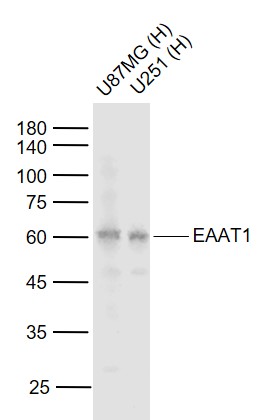
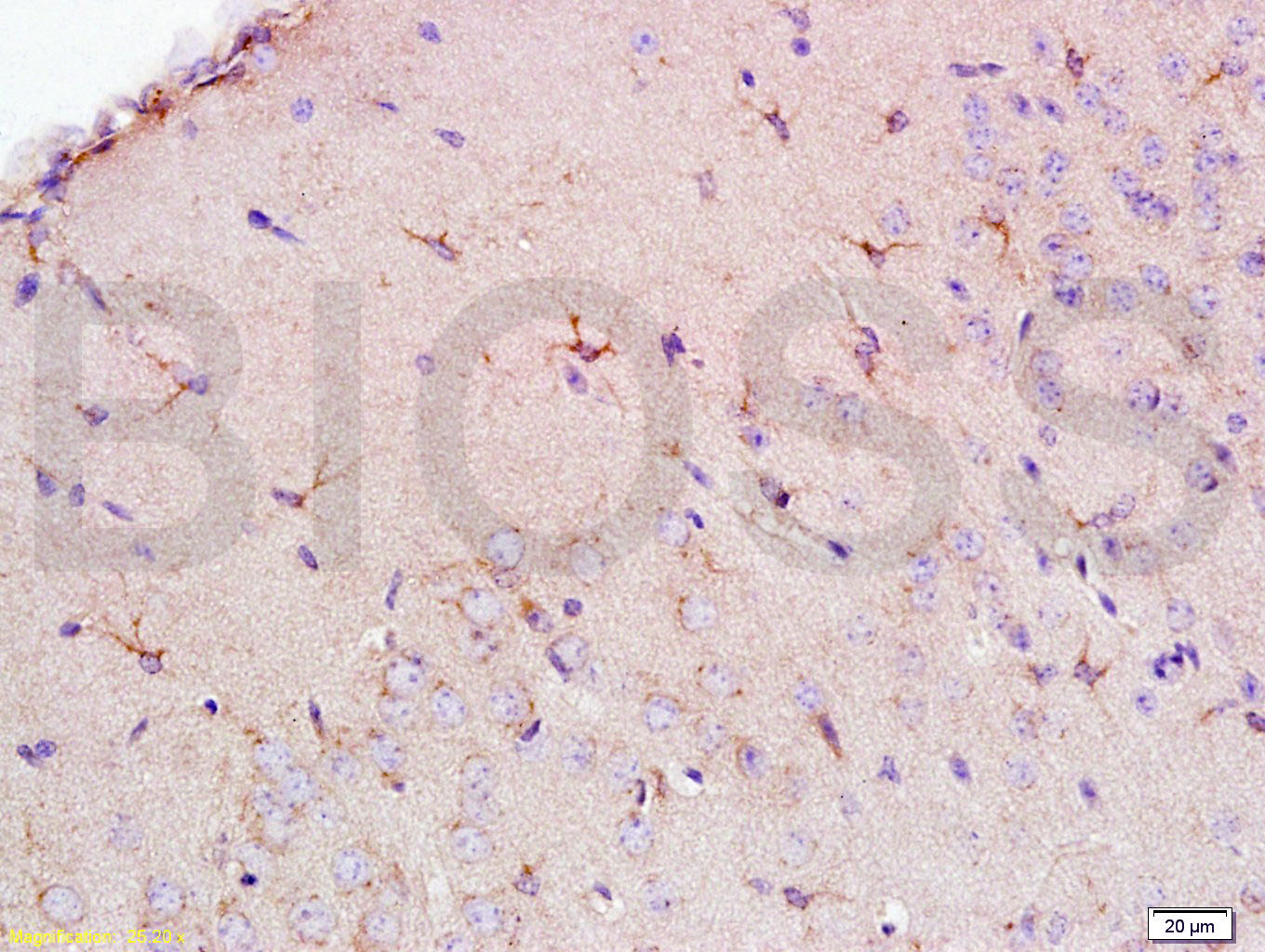
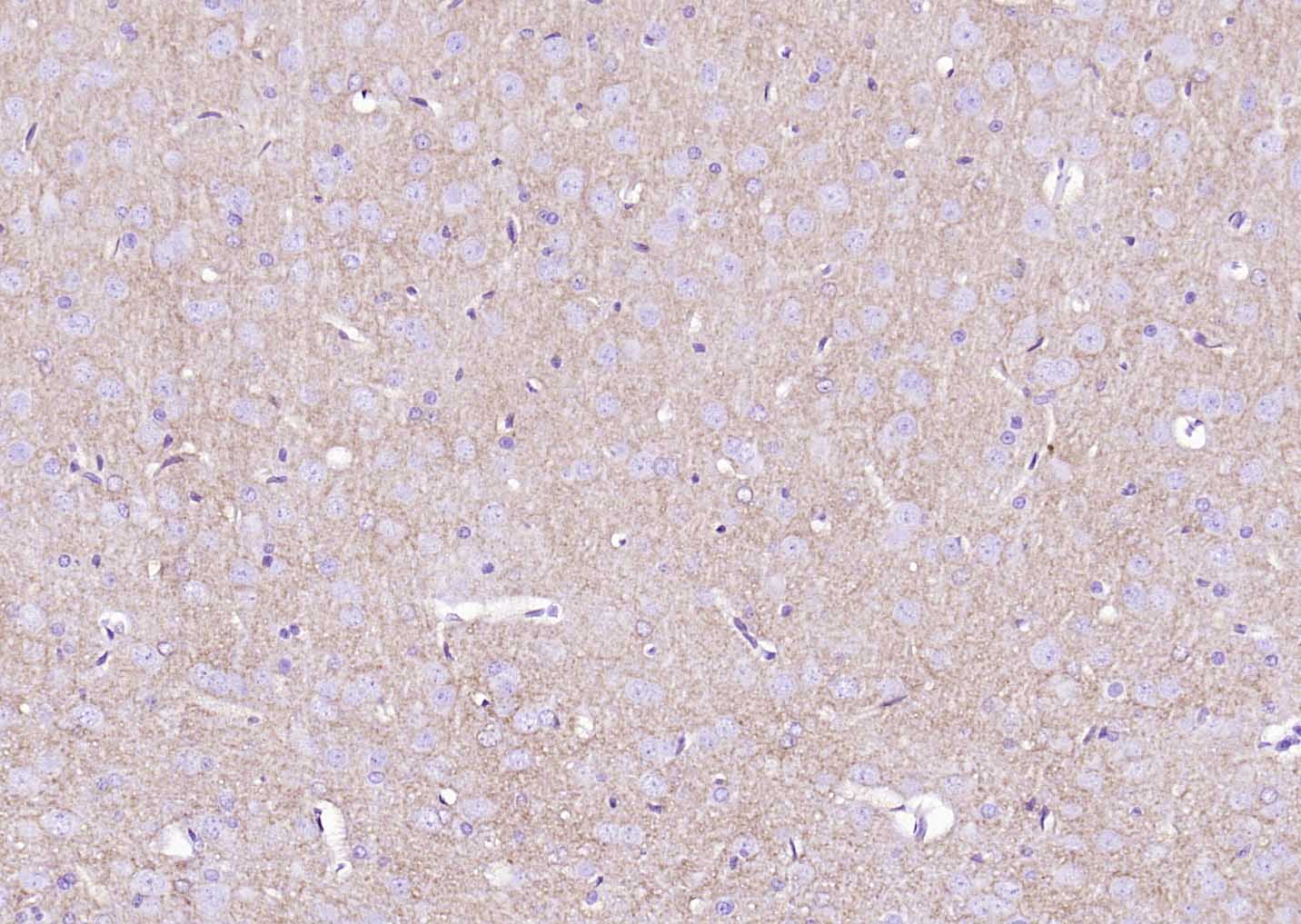
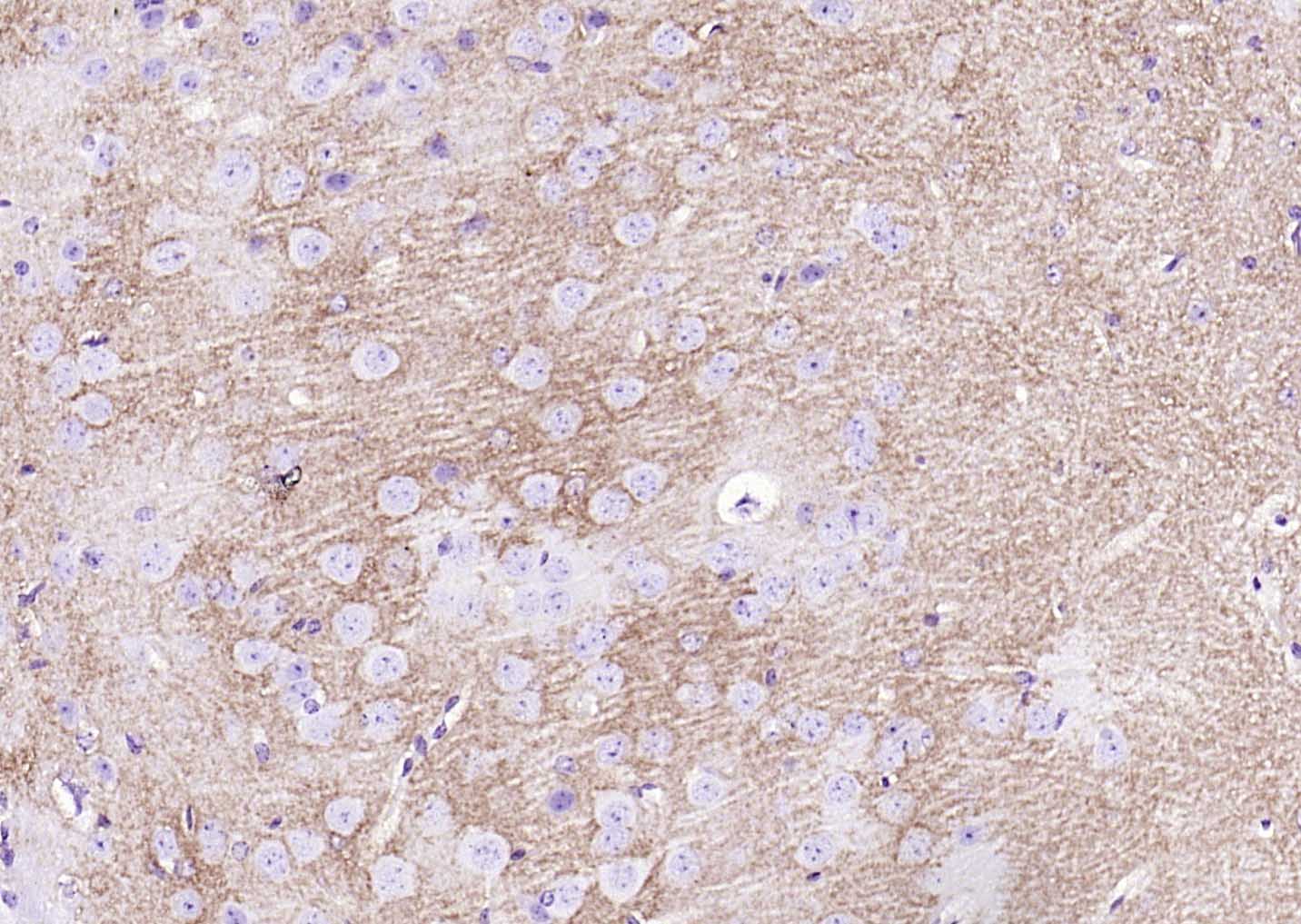
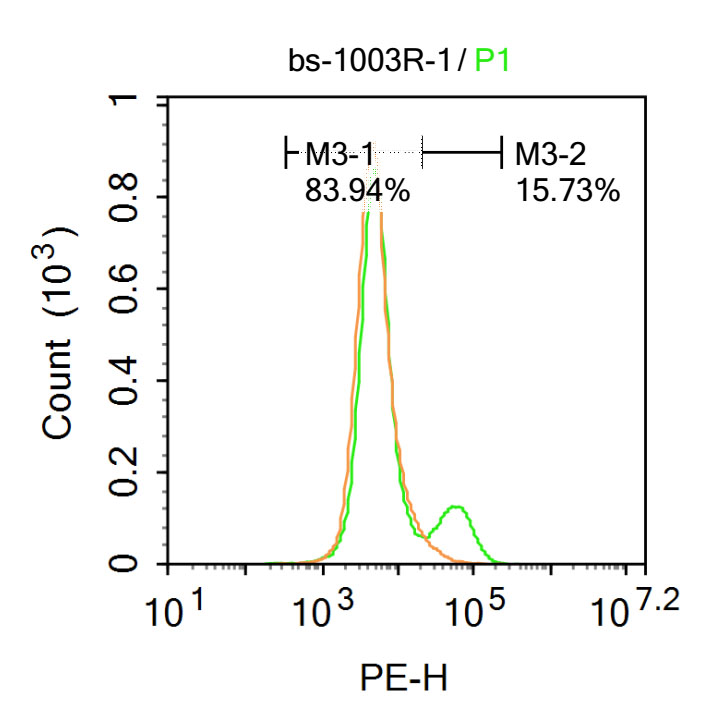


 +86 571 56623320
+86 571 56623320
 +86 18668110335
+86 18668110335

